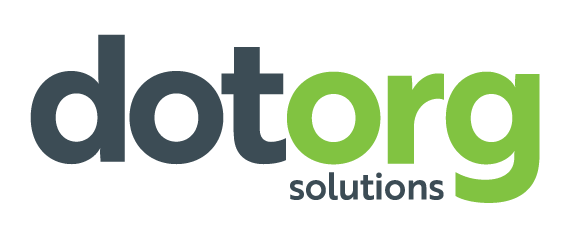Marketing your conference to maximize success
Hosting a successful conference takes time, energy and planning to ensure you are bringing value to the attendees, sponsors and speakers. Planning the conference may seem like the most crucial component of the process, but marketing your conference is just as important. The number of attendees, sponsor support and speaker quality can all be attributed to how many people know about your conference and want to be a part of it.
Promoting your conference
You want to use all the tools you have available (and can afford) to get the word out about your conference. But there are some general things to remember, no matter what promotional material you are creating.
- Be consistent and accurate: Keep messaging consistent and accurate. Double (and triple) check dates, times, speaker names/titles, etc. to ensure they are correct and used properly, whether it is on a social graphic or on your website.
- Maintain cohesiveness: Create a cohesive look and theme that carries throughout your graphics. Your conference brand needs to be easily identified throughout all your content and creative.
- Choose ad platforms wisely: If you are using paid ads as a part of your strategy, choose locations your audience is most likely to see and interact with them.
Let’s look at all the different ways you can promote your conference.
Website
Users need to find conference information easily when they head to your website – you do not want to miss a chance to gain an attendee by making them work too hard to learn about your conference. Your website must also have calls-to-action (CTAs) spread strategically throughout your site, either encouraging registrations or sponsorships.
Tip: Consider using a dedicated landing page or microsite with a domain name URL dedicated to the conference if you have a large conference or have a unique conference name that people will Google.
Don’t forget to tell people about exhibitor and advertising opportunities. Creating a prospectus or a one-sheeter can be a great way to show companies and organizations all the ways they can get their message in front of your attendees.
Email marketing can help you gain attendees and keep your audience up to date with all the great conference happenings.
- Create emails introducing the conference, announcing registration is open, calling for sponsors and announcing speakers, events or incentives that generate excitement.
- Develop a plan that consistently delivers information without overloading anyone’s inbox.
- Also remember to segment your email lists – you might want certain messages to only reach the people who have registered to come. Email can also be helpful to thank your sponsors.
Check out our Friendly From Espresso sip to learn more about how friendly from addresses can help increase deliverability and open rates for your email campaigns.
Direct mail
Use your mailing list to send conference details and other must-know information to your audiences. All direct mail should have a QR code directing recipients to your site or registration page so people can easily access your site.
You can also research local organizations near your conference site and create a list of people who might want to attend or get involved. This works especially well if your conference is hosted in a differently city or state each year. Some organizations don’t have large travel budgets but may support local travel for their team.
Social media
You need to have a solid plan for your organic social media timing and posts. A plan ensures that you are properly prepared ahead of time with content and graphics that are tailored to each platform you plan to use. You don’t want to post the same material on LinkedIn as you would on X (formerly Twitter). Set goals for each platform in your promotional strategy and develop content and creative to reach those goals.
(Our blog on the different social media platforms can help you get a better understanding of which social will work best for you.)
Social media is also a great place to announce updates about your conference and engage with your audience. You want to be consistent in your posting and use high-quality, conference-branded graphics in your posts to make them more eye-catching.
Paid social ads
Social ads can help you better target your audience while they are scrolling through their favorite platforms. Ads should be tailored to best fit the people you are trying to reach and the ad platform. You can access Ads Manager through a Facebook Business Account to set up campaigns on both Facebook and Instagram. X (formerly known as Twitter) and TikTok also have Ads Manager.
There are some things to remember:
- Keep ads short and concise
- Include calls-to-action that are linked to your site
- Use graphics that follow your conference’s theme
Paid social can be an inexpensive way to reach new people who might be interested in your conference. Don’t be afraid to try a few ads. You might be amazed at the interactions you see.
It is also important to monitor your digital ad performance and metrics while the ad is running. If it isn’t performing well, you can rework your content and run new ad content.
Paid Google Search ads
When you search on Google, you probably see results titled “Sponsored” at the top of your feed. These are Google Search Ads. They are keyword driven, meaning they show up when a searcher types in specific keywords that match those that have been developed for a paid campaign. Google Search campaigns are great for longer-term promotion and let you choose your budget and ranking keywords. You can target your audience by demographics and geography.
Google Search Ads generally have a high conversion rate because people are searching for the keywords you are providing for them. You may even connect with people who didn’t know about your conference because they are searching for other conferences that target people with similar interests.
Google Display and YouTube Ads are other great digital ad tools to use in your conference marketing strategy. Display ads show up on the Google Display Network, which includes millions of websites, apps and Google-owned properties like YouTube and Gmail. YouTube ads will show up in the YouTube videos themselves, either before, during, after or in the “Watch next” section. Both are set up through Google Ads and can be targeted based on audience specifics like interests, demographics and in-market data. Display ads and YouTube ads are more for branding your conference and getting in front of as many people as possible. They tend to be affordable and earn high impressions.
Print ads
These ads are placed in journals, newsletters or other forms of media that have content related to your conference. These ads will help attract attendees who are already interested in the general topic of your conference or related topics but may not be aware of your organization specifically. For example, an animal shelter hosting a conference on animal health and safety could place ads in veterinarian magazines.
Partner ads
You may also be able to use partnerships, sister organizations or other like organizations to share your message. Reach out to partners to see if they allow paid ads in their email blasts or will send your information to their listservs. Many organizations allow paid ads in things like monthly newsletters for information that is relevant to their constituency. The idea is to get your information in front of as many people that are interested in you.
Conclusion
Hosting a conference can be a great way to raise funds and awareness for your organization and allow others in your field to connect, network and learn together. But it is a big undertaking, one that takes many hours of planning and strategy.
Marketing your conference takes time, energy and lots of planning. Proper marketing helps ensure that you maximize the number of conference attendees, sponsors and exhibitors, and attract top quality speakers for this event and those in future years.
Looking for a team to help you with your conference marketing strategy and implementation? Contact us today!

Sara Lundenberger - VP, Nonprofit services & operations
Although Sara never meant to be a fundraiser, her first post-college job was as a development assistant and she never looked back. She loves working with our nonprofit clients because they know what they want to achieve, but they may not always know how to get there. She integrates fundraising best practices with an organization’s capacity to create processes and plans that are usable. Sara truly believes nonprofits make the world a better place. From her previous positions to the fantastic clients she works with now, she learns a little more about the world we live in every day. We are all touched by a nonprofit organization every day, whether we know it or not.

